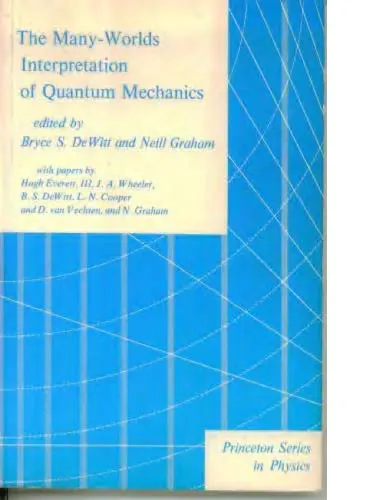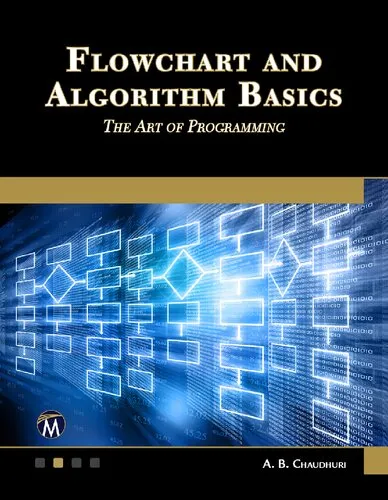The many-worlds interpretation of quantum mechanics : a fundamental exposition
4.5
Reviews from our users

You Can Ask your questions from this book's AI after Login
Each download or ask from book AI costs 2 points. To earn more free points, please visit the Points Guide Page and complete some valuable actions.Related Refrences:
Introduction to 'The Many-Worlds Interpretation of Quantum Mechanics: A Fundamental Exposition'
'The Many-Worlds Interpretation of Quantum Mechanics: A Fundamental Exposition' is a pioneering and foundational text that reshapes how we interpret quantum mechanics, authored collaboratively by Bryce Seligman DeWitt, Neill Graham, Hugh Everett, and other contributing physicists and philosophers. The book not only elucidates the intricacies of the many-worlds interpretation (MWI) but provides a robust, thought-provoking framework for understanding one of physics' most enigmatic concepts—the nature of quantum reality.
This book serves as both an introduction and a deep dive into an interpretation that challenges classical perspectives on measurement and reality in quantum mechanics. Through its multifaceted discussion of quantum theory, the authors offer a fundamental rethinking of the Schrödinger equation, wave function collapse, and the concept that reality branches into countless non-interacting worlds. It is an essential read for physicists, philosophers, and enthusiasts seeking a comprehensive exploration of one of the most radical ideas in science and its implications for our understanding of existence.
Detailed Summary of the Book
The book begins by addressing the historical context in which the many-worlds interpretation (MWI) emerged. Hugh Everett first proposed the idea in 1957 as a resolution to the paradox of quantum measurement. Rather than assuming a single "collapse" of the wave function during observation, Everett suggested that all possible outcomes of quantum measurements are realized in separate, branching worlds. These worlds exist simultaneously, but they do not interact with one another.
The text delves deeply into the mathematical foundation of MWI, focusing on the wave function's unitarity and the deterministic evolution prescribed by the Schrödinger equation. Unlike traditional Copenhagen interpretations of quantum mechanics, which introduce observer-dependent phenomena, MWI maintains that the entirety of existence is determined by the universal wave function.
DeWitt and Graham elaborate on Everett's original conception, extending the interpretation’s implications for physics, philosophy, and even metaphysics. The book discusses quantum decoherence—a process that explains how different branches of the wave function become non-interfering and distinct realities. Each chapter is a stepping stone toward understanding how quantum phenomena in laboratories might correspond to deeply personal, everyday experiences within a multiverse.
In its later chapters, the book addresses criticisms and common objections to the MWI, such as its perceived failure to explain probabilities and the anthropic problem. By carefully navigating rebuttals, the authors present MWI as a theory of unparalleled explanatory scope, despite its counterintuitive premises.
Key Takeaways
- The many-worlds interpretation posits that reality is a vast multiverse comprising countless non-communicating branches, each representing a different outcome of quantum measurements.
- The Schrödinger equation remains universally valid, with no special "wave function collapse" required to account for observations.
- Quantum decoherence plays a pivotal role in ensuring that the branches of the wave function do not interfere with one another, resulting in seemingly distinct realities.
- MWI challenges classical notions of probability and the role of the observer, offering compelling new perspectives on these longstanding issues in quantum theory.
- The interpretation carries profound implications for metaphysics, philosophy, and the way we perceive our place in the universe.
Famous Quotes from the Book
"The world we perceive is only one of countless worlds, all equally real and existing in a superposition of states."
"In the many-worlds interpretation, reality is not singular; it is a tapestry of universes embodying each possibility of existence."
"Quantum mechanics does not describe a single, fixed reality but instead reveals the multiplicity of worlds that emerge as outcomes of quantum events."
Why This Book Matters
'The Many-Worlds Interpretation of Quantum Mechanics: A Fundamental Exposition' is a landmark work that pushes the boundaries of quantum theory and challenges ingrained assumptions about observation, reality, and the nature of existence itself. By providing a rigorous yet accessible treatment of this radical interpretation, the book has helped elevate MWI from a fringe idea to a cornerstone of modern quantum theory discourse.
The philosophical ramifications of MWI stretch far beyond physics, potentially reframing how we think about free will, determinism, and our connection to the universe. As such, this book is not just relevant to quantum physicists but also to philosophers, cosmologists, and anyone curious about the deepest mysteries of existence. Its influence continues to permeate scientific and metaphysical discussions, making it a timeless contribution to intellectual thought.
Free Direct Download
You Can Download this book after Login
Accessing books through legal platforms and public libraries not only supports the rights of authors and publishers but also contributes to the sustainability of reading culture. Before downloading, please take a moment to consider these options.
Find this book on other platforms:
WorldCat helps you find books in libraries worldwide.
See ratings, reviews, and discussions on Goodreads.
Find and buy rare or used books on AbeBooks.





![The Ultimate iOS Interview Playbook: Conquer Swift, frameworks, design patterns, and app architecture [Team-IRA]](https://s3.refhub.ir/images/thumb/The_Ultimate_iOS_Interview_Playbook__Conquer__29925.webp)







